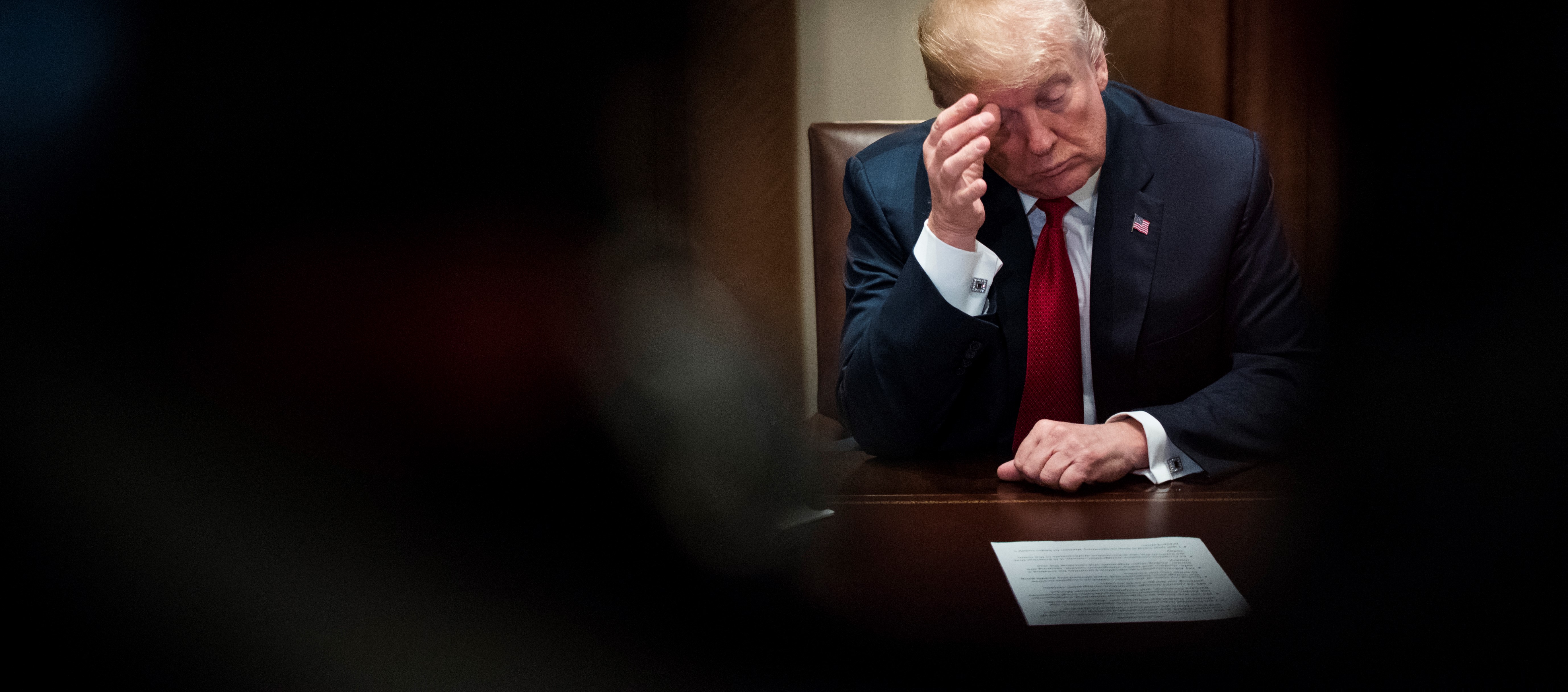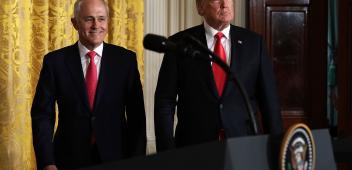'Message to Trump – no TPP renegotiation'
Originally published in the Nikkei Asian Review (Photo: Washington Post/Getty Images).

Having taken the US out of the almost-concluded Trans-Pacific Partnership less than a year ago, President Donald Trump is now saying that he might rejoin – but only if he can get a better deal.
But for Trump the art of the deal is a zero-sum game: If he renegotiates and secures better terms, this can only be at the expense of the other 11 countries that are pressing ahead with implementing an agreement without him.
The TPP-11 should make clear that that this is not on: The US is welcome to rejoin but only on the initial terms. Renegotiation is out.
The first hint of a shift in Trump's views was in an interview with CNBC television at last month's World Economic Forum in Davos, when the US president said: "I would do TPP, if we were able to make a substantially better deal."
In his Davos speech Trump made the following comment about Japan, Australia and nine other nations which have committed to TPP in the US's absence, "We have agreements with several of them already. We would consider negotiating with the rest, either individually, or perhaps as a group, if it is in the interests of all."
A few days later, Trump kept the door to renegotiation ajar in his widely-watched state of the union speech, in which he said: "We will work to fix bad trade deals and negotiate new ones."
The terms of the Comprehensive and Progressive Agreement for Trans-Pacific Partnership to be signed in March by the remaining 11 countries are essentially the same terms in the pact originally negotiated with the US.
These terms come in two quite different sets. First are the trade-enhancing measures encouraging greater exports and imports. Even though these agreements are not the best possible examples of trade openness as they discriminate against non-member countries, the trade-opening aspects of the original TPP were, on balance, positive for all members.
The second set of issues involves "behind the border" rules covering a wide variety of topics: intellectual property; investor-state dispute settlement (ISDS); labour laws; the environment; and more. These are largely "zero-sum" issues: If the US gets stronger protection for the IP on biogenics, consumers of these medicines in other countries will pay more and their researchers will be constrained. If Washington shifts the labour or environments rules, this forces other countries to alter their laws to mimic the US's, which may not be appropriate for them and may enhance American competitive advantage. These contentious matters have already been resolved in the years of horse-trading as the TPP was negotiated. Trump wants to have a second go at shifting the balance in Washington's favour. This might well be interpreted as part of the "art of the deal": Get your partners almost signed up to some hard-fought terms, then tell them that they have to sweeten the deal further.
It's not just Trump who thinks America needs to do a deal much more favourable to the US Senator Orrin Hatch, chairman of the key Senate Fiscal Committee and free-trade supporter, was ready to back the TPP but only if the intellectual property protection on pharmaceutical biologics was increased to match the 12 years of market-protection in US law. These parochial special-interests prevail in the US. The US congress will only agree to a deal if these 'behind the border' rules satisfy the powerful lobby groups which provide politicians' funding.
As for any trade issues that might be included in the renegotiation, Japan has already had a foretaste of what these might be in the initial soundings for a Japan-US free-trade agreement, and the concessions America wants are all unpalatable to Japan. Fixated with the US's bilateral trade deficit with Japan, Trump may push hard on agriculture, motor vehicles and intellectual property, all subjects prone to serious disputes.
Why not try renegotiation and see if Trump's demands can be accommodated? After all, in these multi-country trade deals, the more members the bigger the overall gain and states like Vietnam stand to benefit greatly if America is included. The problem is in the politics: If you negotiate with your much-larger closest ally, with a range of other economic and security issues embodied in the complex overall relationship, it will be hard to explain to your public why you couldn't reach accommodation, especially if the issues are as esoteric as intellectual property. So, if Trump remains intransigent, he will win.
Even if the new terms are significantly worse than the initial TPP, countries like Japan, Australia and New Zealand would have trouble coming away from the negotiating table to report failure. International politics will force them to sign up, even to an unfavourable deal.
Australia's welcoming response to the Trump statement by both the Prime Minister and the Foreign Minister was a mistake. Japan's parliamentary spokesperson Yasutoshi Nishimura got it right: The deal has been done and the terms can't be reopened.
Ideally, the eleven parties to the TTP-11 should make a joint statement assuring President Trump that he is welcome to rejoin the group, but on the original terms. Such a response can be reasonable and unprovocative: After all, if you want to join a club, you don't demand that the club's rules be changed in your favour as a condition of joining. If it is too hard to get a speedy unanimous response, the countries with most at stake (Japan, Australia, and New Zealand) should go ahead anyway.
President Trump's speech at Davos says it all: "America first, not America alone." Of course, the US cannot stand alone: If America wants to do deals, it must find other parties to deal with, in order to wring maximum benefit. But the central promise of enhanced global trade is that all participating countries benefit. Trump's mind-set is at odds with the long-held ideals of international trade.



